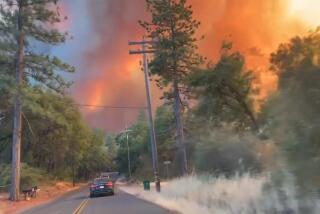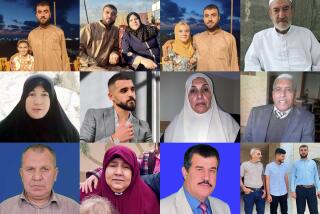One Japanese family ponders tsunami losses
Toshio Otomo, 69, walked unsteadily over piles of rubble on hesitant legs, through caked mud, around a broken wall, in hopes of finding her home of 30 years. The home in which her two children were raised. The home whose garden held her beloved husband’s grave. The home that contained so many memories, photographs and other keepsakes.
Otomo was there along with her children and granddaughter, who had reached the spot, several miles south of Sendai, first. But in yet another indignity, the powerful force of nature that irreparably altered their lives also undermined their hopes for closure: Amid the devastation, they were left struggling to figure out just where their house actually stood.
“It’s back there somewhere,” Otomo said, pointing at a 10-foot-high pile of slanted roofing, beams, splinters and plastic. “It’s gone. How can it just be gone?”
Photos: Scenes of earthquake destruction
Fortunately, the members of the Otomo family are alive, having been working and shopping on higher ground in the northeastern coastal city of Sendai, 20 minutes away by car, when the earth shook Friday. It is an oft-repeated story among coastal families that survived and are now returning to their neighborhoods, the mud hardened, to search through the wreckage and face their demons.
“We were very lucky to be away in Sendai, which is the only reason we survived,” said Toshio’s daughter, Miwa Otomo, 36, an administrative worker, crying gently.
In some ways, seeing they had no house left and nothing to salvage has helped clarify their plans, said Toshio’s son, Junichi, 43, standing beside his wife, Noriko, 41, and 11-year-old daughter, Yui, who was dressed in a puffy pink coat and pink oversized earmuffs.
They will try to forget the past, he said, and walk away from it all.
Noriko nods and takes out a small camera and snaps a few shots, the only thing they’ll take away today, adding that they don’t want to rebuild or even try to salvage much.
“We had no insurance,” explained Junichi, wearing a face mask against the dust and smell. “It’s time to move on.”
But Toshio, like many of the elderly who dominate this area of Japan, isn’t so ready to walk away. For one thing, it’s harder to start anew at her age. At the very least, she wants to return and scrounge for a few possessions, she said, if she can only figure out where to scrounge. The problem is that it’s just not clear where their three-bedroom, single-floor house ends and those of their several neighbors begins.
“How many good memories are here,” she said. “It’s very sad.”
Longtime residents braving the wreckage remain jumpy. A woman passing nearby became nearly hysterical after a small aftershock left her convinced another tsunami was imminent. The lingering fears have been intensified, Junichi said, by the drumbeat of media reports warning of new tremors, tsunamis and radiation leaks.
Toshio’s husband, a fisherman, died several years ago. In his prime, he supported the family with his small fishing vessel.
“When I was a small boy, I’d go out with him and help out,” Junichi said. “Now we’re left trying to make sense of how the same sea that provided for our family could hurt us like this. It’s too big to absorb.”
The family makes another stab at matching their mental map with the mess before their eyes, trying to trace where the small path between the neighbors’ houses went, where the trees and flower pots once stood amid the jumble of giant pickup sticks before their eyes.
“Maybe it’s beyond that pile,” said Miwa, pointing to yet another indistinguishable mound. “I wish we could go up, but I guess that’s impossible.”
Junichi reminisced for a few minutes about playing here as a small child, walking by the sea; reading manga, Japanese comics; the hike to his school a half-mile away. “No, this is all finished,” he said with a sudden look of resolve. “We must do our best to move on.”
Toshio leaned down to look at photos in a plastic album half-buried in the mud before realizing they were of another family.
“A baby,” she said absentmindedly. “Someone else’s baby.”
As darkness fell, the family lingered for a few more minutes before heading out onto the nearest pathway, which had been cleared by army bulldozers, leaving a 10-foot-high perimeter like a recently plowed road.
They looked out at the now-placid bay, which used to swarm with boats, the seemingly impenetrable seawall that was so easily breached, and the promenade they’d stroll along, watching fireworks on warm summer nights.
Photos: Scenes of earthquake destruction
More to Read
Sign up for Essential California
The most important California stories and recommendations in your inbox every morning.
You may occasionally receive promotional content from the Los Angeles Times.










